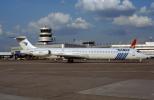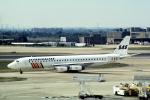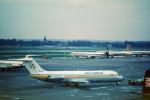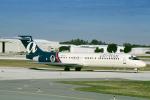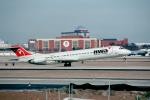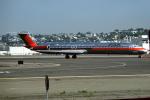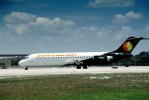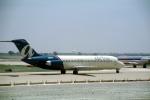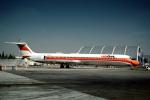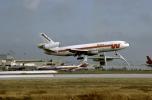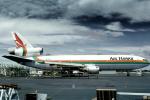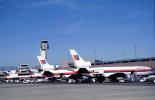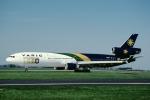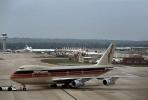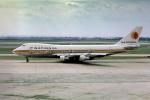Animals
Cities
Disasters
Entertainment
Food
Government
Health
Industry
Insects
Military
Nature
People
Sports
Technology
Universe
Vehicles
Explore over 500,000 Images in my personal collection
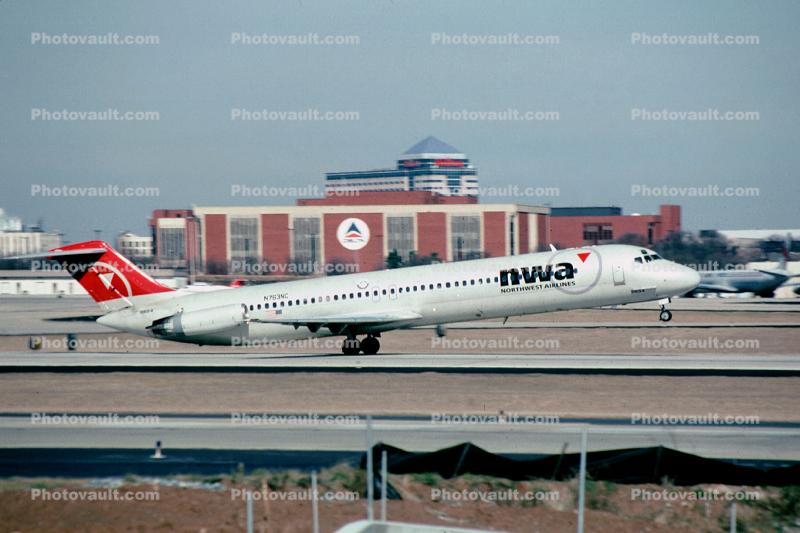
|
|

- Code Number:
- TAFV43P06_06
- Title:
- N763NC, McDonnell Douglas DC-9-51, Northwest Airlines NWA, JT8D
- CN: 47716
LN: 832
First flight: 1976
Total airframe hours: 67268
Cycles: 66998
Engines: 2x Pratt & Whitney JT8D-17
Accident Report:
Date: 10/04/2005
Status: Final
Time: 19:36
Crew: Fatalities: 0 / Occupants: 5
Passengers: Fatalities: 0 / Occupants: 94
Total: Fatalities: 0 / Occupants: 99
Airplane damage: Written off
Airplane fate: Written off (damaged beyond repair)
Location: Minneapolis-St Paul International Airport, MN (MSP) (United States of America)
Phase: Taxi (TXI)
Nature: Domestic Scheduled Passenger
Departure airport: Columbus-Port Columbus International Airport, OH (CMH) (CMH/KCMH), United States of America
Destination airport: Minneapolis-St. Paul International Airport, MN (MSP) (MSP/KMSP), United States of America
Flight number: 1495
Narrative:
Northwest Flight 1495 departed Columbus (CMH) at 18:26 on a flight to Minneapolis (MSP). The flight was carried out by DC-9-51 N763NC. After takeoff, at some point below 4,000 feet altitude, when the slats were retracted, the MASTER CAUTION light illuminated. The co-pilot, who was pilot flying, observed the RUDDER CONTROL MANUAL annunciator light and then saw that the right hydraulic system pressure was about 1,000 pounds per square inch (PSI). The right engine hydraulic pump switch was selected to 'off' and the flight was continued while the captain referred to the NWA DC-9 Cockpit Operating Manual (COM) to complete the procedures. He also discussed the problem with maintenance control on the ground. The approach and landing at Minneapolis were briefed thoroughly. Approximately 18:50, the captain contacted dispatch to request that they "call out the trucks" for their arrival. At 19:01 the captain radioed to MSP center "ah we got a hydraulic problem, we're gonna go ahead and declare an emergency. ah everything should be okay but just gonna have to land a little faster and we're gonna have the trucks standing and everything." The landing gear was extended early in the approach because the crew was uncertain if they would have to use the Emergency Gear Extension Handle. This was not necessary as the gear extended successfully. The first officer flew a long slow downwind from Farmington to a downwind leg to runway 22. He turned onto the localizer course at an altitude about 3,000 feet. The flight was then cleared for the approach to runway 22. A safe landing was carried out at 19:23. After landing the flaps were retracted and the After Landing checklist was completed. The crew received taxi instructions, and after crossing runway 30L, he made a right turn onto taxiway A. They made a slight gradual turn into the gate area. He had just started to turn into the gate from taxiway A when the nose wheel steering failed. The first officer then advised Ground Control that they were experiencing steering problems and would probably have to be towed to the gate. He then called MAINT and told them the same thing. Then the captain lost the brakes. The first officer stated that he saw the captain's hands "come up" and apply reverse thrust. The airplane came to a stop. The first officer stated that he called maintenance again and told them that they had lost steering and brakes and that they needed to have the airplane chocked. Maintenance asked if they would shut down the engines and the captain said, no, he needed the reversers. The first officer stressed that they needed to get somebody out there right away; they were in a very precarious situation. maintenance said they would have somebody out as soon as they could. The first officer made a PA announcement to the passengers telling them that the airplane was experiencing a system malfunction; they were going to stay put and then be towed to the gate. At 19:36 they began to slowly roll forward. The captain then tried using the engine reverse thrust to stop the airplane, but the thrust reversers did not deploy. Then the DC-9 started moving towards a Northwest Airlines A.319 (N368NB) and impacted the A.319 with a speed of approximately 16 mph. The DC-9 hit the aft part of the A.319 right wing after sliding under its horizontal stabilizer.
PROBABLE CAUSE: "The Captain's decision to shutdown the left engine during taxi with no hydraulic pressure on the right side hydraulic system to effectively operate the brakes, steering, or thrust reversers. A factor was the fatigue fracture of the rudder shutoff valve which resulted in the loss of right side hydraulic pressure."
Follow-up / safety actions:
Following the accident, the airplane manufacturer issued a service letter pertaining to the replacement of the rudder shutoff valve based upon reliability information that was reported to them.
Sources:
? NTSB id CHI05MA111A - Keywords:
- Caption Disclaimer

